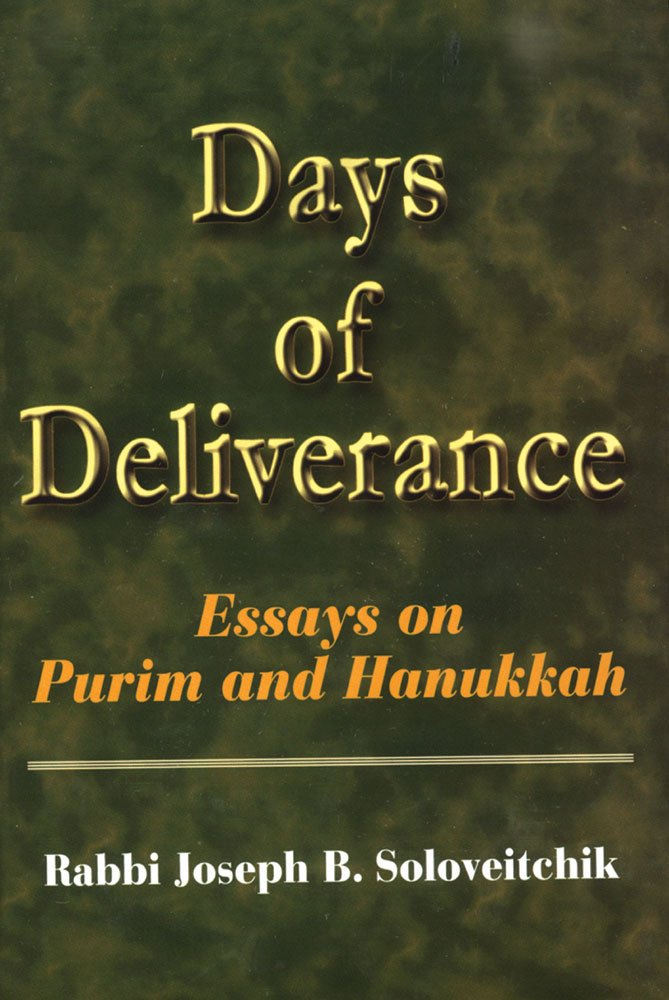The story of Esther tells us in the most lively, realistic fashion, with a tinge of refined yet biting sarcasm, about paradoxical, absurd events, which are both tragic and comical at the same time. We are told a story of a king who, as our Rabbis have already remarked, killed his beautiful, beloved, young queen at the suggestion of his friend (Memucan); this friend then succeeded to rise to the top of the Persian hierarchy (“Memucan was Haman,” Megillah 12b), and later the king hanged the friend upon the complaint of his new, beautiful queen and bride. It is a strange story, both sad and funny, about a king, neither wicked nor cruel per se, who signed, upon the spur of the moment, a decree to exterminate a people he did not know, without even inquiring as to their identity, and a short time later forgot the whole incident and became very indignant over Haman’s foul conspiracy. It is a story about a commonwealth where many races lived, many languages were spoken, many rituals practiced, a pluralistic society, culturally and religiously, which suddenly decided to commit genocide for one reason only: the people who were to be exterminated were abiding by religious statutes and laws that differed from those of other people.
It is a puzzling story about millions and millions of people, about countless liberal-minded, decent individuals who indifferently accepted the satanic, bloodthirsty, murderous royal edict, without even asking themselves, Can we tolerate that? Can we stand by and witness the extermination of a people? It is a story about a conspiracy of silence agreed to by the entire citizenry of the great Persian empire. And, mind you, it was permissible to demonstrate in Shushan. Mordecai paraded in the streets of the capital, wrapped in sackcloth with ashes on his head, and he cried with a bitter and loud cry (4:1). Mordecai even demonstrated in front of the royal palace. No guards blocked his way. Yet no one else joined him, neither friend nor stranger. “The city of Shushan was perplexed” (3:15). The Jews did not believe it; they refused to face reality. The non-Jews did not care.
Moreover, the story is puzzling because of a very strange coincidence. A short time before, the entire population was invited to the seven-day feast on the grounds ofthe royal palace. The invitations were extended to everybody, Jew and gentile alike, to all races and faiths, “unto all the people who were present in Shushan” (1:5). The invited guests fraternized, drank toasts, shook hands, and hugged each other. A little later, the ruthless, inhuman edict was issued and sent hastily with the couriers to all parts of the commonwealth “to destroy, to slay and cause to perish all Jews both young and old, little children and women in one day” (3:13). How is it possible? What is more amazing is the cryptic remark:
The posts went forth in haste and the decree was given out in Shushan, and the king and Haman sat down to drink and the city of Shushan was perplexed (3:15).
The king and Haman celebrated by feasting on wine! The dignitaries of the Nazi party, after completing their work on the famous Wannsee Conference Protocol, dealing with the Final Solution of the Jewish Question, feasted until dawn.
The answer to this riddle can be found in our philosophy of man as a dual, dichotomous being, burdened with an inner contradiction. I have said before that Judaism has never accepted the two-valued Aristotelian logic which, in its principles of contradiction and the excluded middle, states that, if A contradicts B, then only one of them is right and the other is wrong; the thing is either B or A, to the exclusion of either being both together or being neither A nor B. Judaism has ignored this principle and has quite often acted as if both A and B are right, in spite of their mutual exclusiveness. Even in the halakhic realm, Judaism believes that there is a possibility for a contradiction in the objects without negating either of them. Jewish philosophy and the metaphysic of man can only be understood if the dialectical principle is adopted as the point of departure.
On the one hand, Judaism looks upon man with a sympathetic, appreciative eye—indeed with admiration. He is the king of all creatures. Judaism has time and again expressed faith in man and belief in human uniqueness, in man’s royal status, in his contemplative, meditative power. After all, he is the only rational being in the universe. In a word: he is a great figure.
That this thesis is correct, that Judaism is optimistic about man and his nature, can be attested by our stand on human freedom. Judaism has declared without any reservations that the human being enjoys unrestricted moral freedom. God does not interfere with man’s liberty to plot his own existential course. Apparently, man is deserving offreedom. It has not been granted to any other creature.
On the other hand, Judaism has also treated man with extreme caution, alas suspicion. The Judaic skepticism concerning man is due to our historical experience and memory that man, though endowed with Divine rationality, may turn at a moment’s notice into either a non-rational or an irrational being. That is why Judaism took all the extravagance of man in stride. It has never been stunned, amazed, or aghast watching the latter suddenly run amok. In the opinion of Judaism, there is no element of surprise in man’s abrupt changes and transformations; his unpredictability is a part of his humanity, and I would say that his unpredictability is quite predictable.
Excerpted from Day of Deliverance: Essays on Purim and Hanukkah by Rabbi Joseph B. Soloveitchik.
More information on the book can be found here: www.oupress.org

